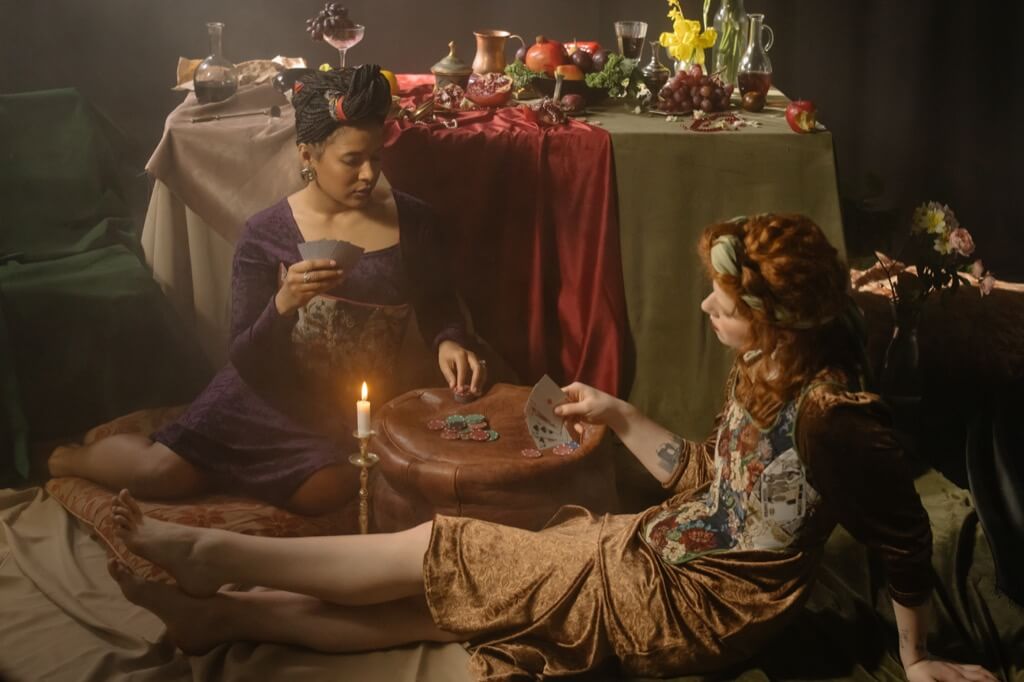When one thinks of medieval times, gallant knights, spirited horses, jesters, and fair maidens often come to mind. And of course, the iconic chastity belts supposedly worn by maidens to maintain their purity. But, dear readers of Africa Nova, let’s set the record straight: historical evidence suggests these belts weren’t as medieval as one might think.
It’s a Popular Tale
Crusading knights leaving their homes, trusting the chastity belts they’d locked around their beloveds to ensure their fidelity. But delve into history and you’ll find that these brave knights, though familiar with honor and valor, probably had no inkling about “chastity belts.”
The term “chaste” in the 12th century pertained to virtue and purity in the context of the Church’s definition of “unlawful sexual intercourse.” By the 14th century, its meaning extended to refer to a virgin.
But Where Did the Whole Metal Belt Saga Come Into Play?
A hint comes from Konrad Kyeser’s 1405 military tome, Bellifortis. In it, amid illustrations of crossbows and torture apparatus, lies a depiction of a “female chastity device.” Kyeser’s cheeky commentary hints at it being a joke: a humorous notion rather than historical fact. His playful insinuation about Florentine women suggests these devices weren’t a widespread reality but might’ve been an inside jest.
From poetry to paintings, references to cloth-like chastity belts pop up in several sources. Often, they seem more symbolic than literal—a physical testament to a maiden’s vow of purity. But it’s essential to approach tales of metal chastity belts with caution. Putting such abrasive materials against the skin for extended periods could lead to life-threatening infections. The fact that no tangible artifacts from these times have been conclusively verified also casts doubt on their historical authenticity.
However, in Venice’s Doges Palace, one purported chastity belt allegedly designed by Francesco di Carrara II in 1388 for his wife stands on display. But its authenticity, like many others in museums worldwide, remains a matter of academic debate. Many renowned museums have revised the dates of their chastity belts, realizing that some might not be as ancient as once thought.
Flash forward to the Victorian era, where the concept of chastity belts made a striking comeback, but for different reasons. During this period, societal fears around masturbation labeled it a grievous malaise. Victorian chastity belts, often cushioned to prevent metal-flesh contact, were seen as safeguards against this perceived threat and were even used to protect working women in hazardous environments.
What You Didnt Know
The Wit of Mark Twain on Chastity
You might think of Mark Twain for his tales of the Mississippi or Tom Sawyer’s adventures, but did you know he also had a lot to say about societal views on masturbation? With his usual sarcastic flair, Twain conjured up quotes from great figures like Homer and the Zulu leader Cetewayo. “Give me masturbation or give me death!” or “A jerk in the hand is worth two in the bush,” Twain humorously attributed to them. Remember, Twain loved to poke fun at societal norms. If you find yourself giggling at his made-up quotes, just remember his advice: If you’re ever feeling revolutionary, there are other ways to handle it than playing a ‘Lone Hand’!
A 21st Century Take on Chastity Devices
Ever heard of a modern-day chastity device called the “Rape-Ax” from South Africa in 2010? This device, designed for women, ensures any male wrongdoer would experience swift and immediate regret. If you think chastity belts belong only to the past, think again. While your first instinct might be to cringe at the idea, devices like these are responses to very real, contemporary issues.
The Anti-Masturbation Contraption of 1911
Turn the clock back to January 20, 1911, and you’ll find an invention by Jonas E. Heyser that might raise your eyebrows. Granted patent number 995600, this “Surgical Appliance” was designed for men. But don’t be fooled by its bland name; it was an anti-masturbation chastity device. Intended for “patients,” likely those in institutions, Heyser claimed it could be worn with “reasonable comfort.” If you ever feel like a trip down history’s quirkier paths, just imagine wearing Heyser’s contraption and decide for yourself how “comfortable” it might have been!
The Renaissance View on Chastity
During the Renaissance, an era renowned for its artistic and intellectual advancements, the perception of chastity was multifaceted. On one hand, the art of this period celebrated the human form, with painters like Botticelli showcasing the beauty of the naked body. On the other, societal norms remained rooted in Christian teachings that emphasized the virtues of purity and abstinence. This duality encapsulates the era’s struggle between religious conservatism and emerging humanism. As you delve into Renaissance literature and art, you’ll notice these subtle undertones that display a society at a crossroads, exploring the boundaries of human desire while also upholding traditional moral values.
Myths about Chastity in Ancient Civilizations
Ancient civilizations, from the Greeks to the Egyptians, had their own share of myths and legends surrounding chastity. For instance, the Greeks believed in the tale of the Vestal Virgins, priestesses of Vesta, the goddess of the hearth, who took vows of chastity.
A breach of these vows was punishable by burial alive. Meanwhile, in ancient Egypt, chastity was linked to the goddess Isis, revered as the ideal mother and wife. The intertwining of chastity with divine tales underscores its significance in shaping societal mores and values. Understanding these myths can provide unique insights into how ancient societies viewed purity and morality.
Medical Misconceptions Linked to Chastity
Throughout history, medical professionals have often held misguided views linking physical ailments to chastity or lack thereof. In the Victorian era, doctors believed that a range of illnesses, from hysteria to melancholia, was directly associated with sexual abstinence or excessive sexual indulgence.
These notions were not just restricted to women; men, too, were believed to suffer from ailments stemming from sexual behaviors. As you sift through historical medical texts, you’ll find an array of treatments – some bizarre, others downright dangerous – prescribed to ‘cure’ these perceived maladies. It’s a stark reminder of how societal beliefs can profoundly influence medical practices.
The Role of Chastity in Literature
Chastity has always been a recurring theme in literature, from ancient epics to modern narratives. Characters like Shakespeare’s Desdemona were subjected to intense scrutiny for their perceived purity, reflecting societal expectations of the time. Novels from the Victorian era, such as Thomas Hardy’s “Tess of the d’Urbervilles,” tackled the theme head-on, portraying the tragic consequences of societal obsession with a woman’s purity. As you read through various eras, you’ll see that literature serves as a mirror, reflecting society’s evolving views on chastity, from revered virtue to contested ideal.
Chastity and the Birth of Feminism
As societies evolved and women began to fight for their rights, the concept of chastity came under intense scrutiny. Early feminists questioned why chastity was predominantly a burden placed upon women, arguing it was a tool to control and subjugate them.
Figures like Mary Wollstonecraft in her seminal work “A Vindication of the Rights of Woman” critiqued societal expectations around female purity. The discourse on chastity played a pivotal role in the early feminist movement, setting the stage for subsequent discussions on women’s autonomy over their bodies and sexuality. By revisiting these early feminist texts, you gain a deeper understanding of the struggles and debates that paved the way for modern feminism.
The notion of the chastity belt has been romanticized and misrepresented throughout history. It stands as a testament to our collective fascination with the past and our penchant to pepper it with our own contemporary biases. So, next time the image of a medieval maiden locked in a chastity belt springs to mind, remember: history isn’t always as it seems, and the truth can be more intriguing than fiction.




